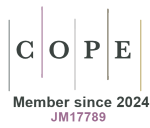Budget impact analysis of different rapid-acting insulin analogues in Italy
DOI:
https://doi.org/10.33393/grhta.2018.448Keywords:
diabetes, insulin glulisine, national expenditureAbstract
Introduction: Rapid-acting insulins are the current standard of care in diabetes management. Insulin aspart (IA), lispro (IL) and glulisine (IG) demonstrated similar efficacy and safety. However, their impact on the National Health Service (NHS) expenditure could be a relevant differentiating factor. Objective: The study aims to assess the budget impact of IG increased market share in a new scenario vs. current case. Method: A budget impact model built in MS Excel (2010) estimated the impact of IG on the Italian NHS expenditure. Input data were derived from published sources. Pharmaceutical expenditure for considered treatments was estimated on retail or hospital prices and no price modifications were assumed. A scenario analysis was conducted by varying the IG market shares. Results: In the current scenario, IG market share 17.2%, the NHS expenditure is respectively €245-250 million at first and third year. Increasing the IG market share of 35% more of the current scenario, at first year and more of 50% at the following two years, the NHS expenditure reduces to €244.3, €245.0 and €244.8 million in the three years with cumulative, savings around € 8.8 million at third year. The scenario analysis shows that, increasing the IG market shares from 17.2% to 26% at first year, it is possible to achieve savings for almost 10.7 million at third year. Conclusions: IG, besides being as effective and safe as IL and IA, is less expensive and can reduce the financial burden to the Italian NHS up to €8.8 million at third year.










